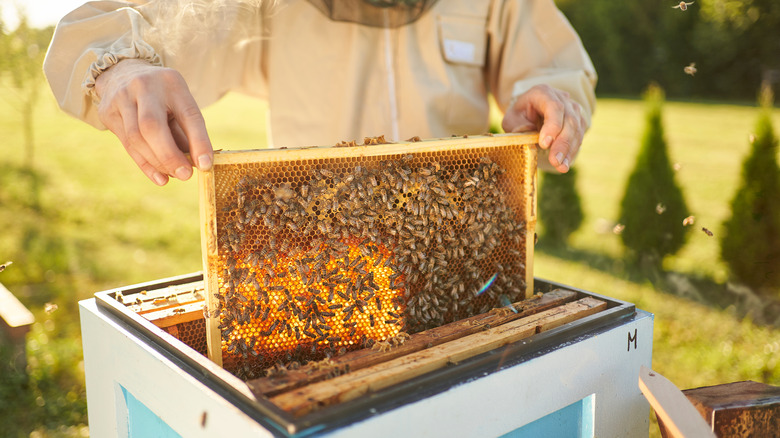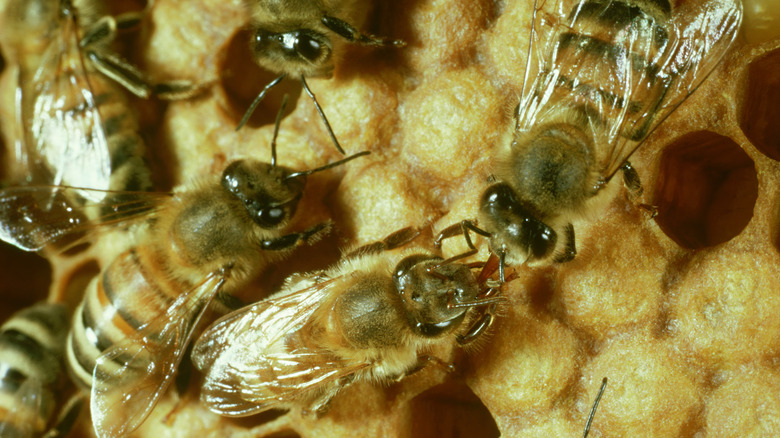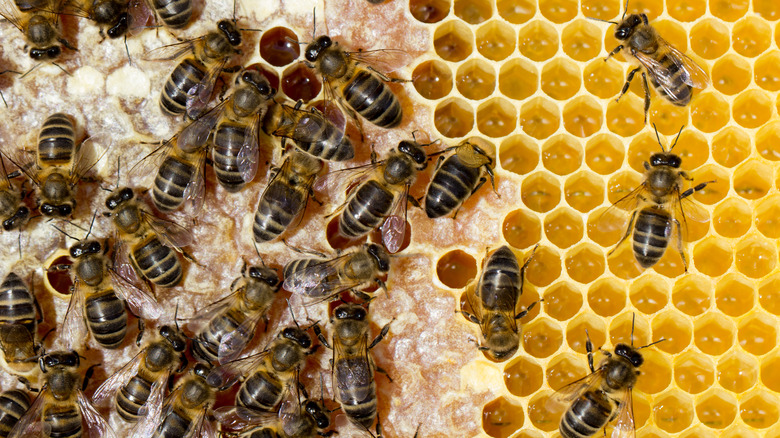A Manmade Beehive Entrance Is Helping Fight Off Deadly Parasites
Correction 11/23/22: A pervious version of this article referred to the Varroa mite as the Varroa destroyer. The correct name is the Varroa destructor.
It's hard to imagine that one small insect could be responsible for keeping humanity alive, but such is the job of the bee. According to The U.S. Food and Drug Administration, bees are important because they are crop pollinators, allowing farmers to grow the mass quantities of food that are shipped across the United States and the world every day. Bees and other pollinators are responsible for pollinating 35% of the world's food crops, and help to support the production of 87 of the leading food crops (via Live Kindly).
Despite being a cornerstone of food production, bee populations are on the decline. This has alarmed many researchers, who are concerned about the potential impact of losing one of the biggest pollinators of food crops. The U.S. Department of Agriculture states that the decrease in bee numbers is due to a large number of factors, including pesticides, pollutants, habitat loss, and more. In addition, diseases and parasites are plaguing entire bee hives, devastating local populations. Luckily, one beekeeper may have found a unique solution to stopping deadly parasites from wreaking havoc on bee populations.
Mites are found in almost every beehive across the United States
One of the greatest threats to bees in the United States is the Varroa mite, often referred to as the Varroa destructor, per Texas A&M AgriLife Research. According to Bee Aware, Varroa mites attach themselves to adult honeybees to feed, but also often feed on bee larvae during their development, leading to weakened, malformed bees. The Varroa mite is prevalent in most hives across the United States, leading to more research into how these mites spread and how to eliminate them (via CNN).
According to Samuel Ramsey, a professor of entomology at University of Colorado Boulder's BioFrontiers Institute, "bee researchers often refer to three Ps: parasites, pesticides and poor nutrition." The Varroa mite fits the "parasite" criteria, but Ramsey states that this is not the only way they harm bees: "When compromised by (Varroa mites), colonies are also more susceptible to the other two." This is because the Varroa mite feeds on the "fat body" of bees, which works similarly to a liver in mammals (via Proceedings of the National Academy of Sciences of the United States of America). This makes it harder for bees to process things like pesticides, eventually killing them.
HiveGuard helps protect bees every time they enter the hive
In order to prevent bee death due to the Varroa mite, research efforts have been aimed at reducing and eliminating the mite's presence in hives. One researcher, 20-year-old Raina Singhvi Jain, may have just created the solution. Her invention, known as HiveGuard, is a simple way to protect bees from the deadly Varroa mite every time they enter the hive (via Save the Sound).
Jain's invention is simple but effective: a 3D printed hive entrance coated in thymol, an organic pesticide that harms the mites without hurting the bees (via U.S. Environmental Protection Agency). As Jain puts it, "As bees pass through the entranceway, the thymol rubs off onto the body of the bee, where ultimately the concentration kills the Varroa mites, but the honeybee is left unharmed" (via CNN). Jain's new hive entrance has already shown promising results, with a 70% decline in mite populations just three weeks after being installed. Promising research like Jain's is paving the way to a new future where bee's are no longer at risk of extinction.


